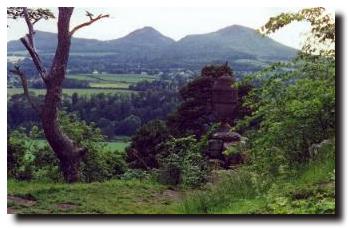
Famous Scots
- Thomas the Rhymer (c1210-c1294)

Although some of the stories relating to Thomas the Rhymer may be fanciful, there is firm documentary evidence of "Thomas Rimor de Ercildoun" (the modern Earlston, in Berwickshire) witnessing documents in the 1260s. According to a poem which Thomas wrote about his life, (and to which Sir Walter Scott gave new life when he included it in his collection "Minstrelsy of the Scottish Border" in 1804), Thomas saw the Queen of the Fairies in the Eildon Hills and returned with her to her kingdom under the hills. He thought he had been there three days but when he returned to the surface, he found it was for three years.
The Queen gave Thomas the gift of prophecy - and amongst his successful predictions were the death of King Alexander III in 1286, the defeat of King James IV at the Battle of Flodden in 1513 and the Union of the Crowns of Scotland and England in 1603.
One of his prophesies was "Tide, tide, whate'er betide, There'll aye be Haigs at Bemersyde". The Haigs held the land until 1867 and it looked as though that prediction had failed - but in 1921 it was bought for Field Marshall Earl Haig. Thomas' prophesies were so revered that they were consulted by the Jacobites before the Uprisings in both 1715 and 1745.
Thomas is believed to have also written a story "Sir Tristrem" which Walter Scott also edited. It is one of the oldest surviving pieces of Scots poetry.
Return to the Index of Famous Scots
Where else would you like to go in Scotland?

